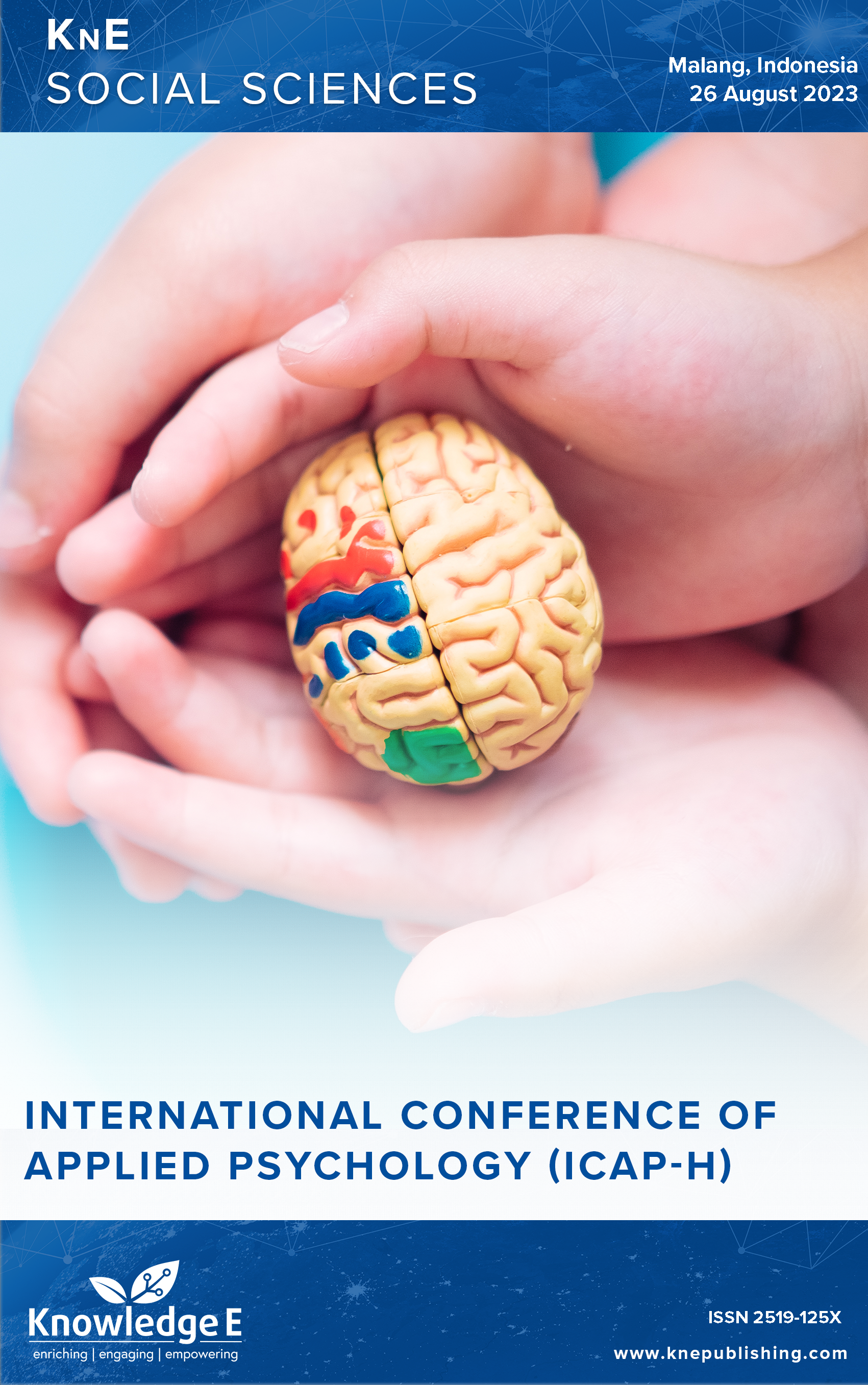Developing the Contribution of Information Processing Activities in Forming Persuasion
DOI:
https://doi.org/10.18502/kss.v9i5.15201Abstract
Research on persuasion or attitude change has been approached through singleprocess models. The focus of this research is to explain more clearly that persuasion only occurs through a process that is directly caused by social influence. However, the use of this approach produced contradictory results. On the one hand, social influence increases persuasion, but other research finds the opposite. This article discusses the possibility of using a dual-process model approach, which is expected to address the inconsistency of social influence on persuasion in single-process models. Dual process models are proposed to be able to provide new explanations regarding the possibility of multiple effects of social influence variables on persuasion by including information processing activity variables. Through the dual process model approach, it is possible to explain that a certain effect can be caused by different processes and that a certain variable can work differently and in different situations. Social influence has different mechanisms for determining persuasion, which can act as a simple cue when the thinking level is low and can have more than one role (multiple roles) when information processing activities are at a high thinking level.
Keywords: elaboration likelihood models, information processing, persuasion, social influence
References
Petty RE, Wegener DT. Attitude change: Multiple roles for persuasion variables. Handbook of Social Psychology. 1998:323–390.
Arikunto S. Prosedur penelitian (Suatu Pendekatan Praktek). Jakarta: 2006. https://doi.org/10.1111/j.1745-6916.2008.00071.x.p
Wood W. Attitude change: Persuasion and social influence. Annual Review of Psychology. 2000;51:539–570. https://doi.org/10.1146/annurev.psych.51.1.539 DOI: https://doi.org/10.1146/annurev.psych.51.1.539
Cialdini RB, Goldstein NJ. Social influence: Compliance and conformity. Annual Review of Psychology. 2004;55:591–621. https://doi.org/10.1146/annurev.psych.55.090902.142015 DOI: https://doi.org/10.1146/annurev.psych.55.090902.142015
Crano WD, Prislin R. Attitudes and persuasion. Annual Review of Psychology. 2006;57:345–374. https://doi.org/10.1146/annurev.psych.57.102904.190034 DOI: https://doi.org/10.1146/annurev.psych.57.102904.190034
Bagozzi RP, Lee K-H. Multiple routes for social influence: The role of compliance, and social identity. Social Psychology Quarterly. 2014;65:226–247. DOI: https://doi.org/10.2307/3090121
Petty RE, Briñol P. A multiprocess approach to social influence. 2012. https://doi.org/10.1093/acprof DOI: https://doi.org/10.1093/acprof:osobl/9780199743056.003.0005
Brinol P, Petty RE. Source factors in persuasion: A self-validation approach. European Review of Social Psychology. 2009;20:49–96. https://doi.org/10.1080/10463280802643640 DOI: https://doi.org/10.1080/10463280802643640
Tormala ZL, Briñol P, Petty RE. Multiple roles for source credibility under high elaboration: It’s all in the timing. Social Cognitive. 2007;25:536–552. https://doi.org/10.1521/soco.2007.25.4.536 DOI: https://doi.org/10.1521/soco.2007.25.4.536
Azwar S. Penyusunan Skala Psikologi (Edisi 2). 2014.
Wiles R, Crow G, Pain H. Innovation in qualitative research methods: A narrative review. Qualitative Research. 2011;11:587–604. https://doi.org/10.1177/1468794111413227 DOI: https://doi.org/10.1177/1468794111413227
Ferrari R. Writing narrative style literature reviews. Medical Writer. 2015;24:230–235. https://doi.org/10.1179/2047480615z.000000000329 DOI: https://doi.org/10.1179/2047480615Z.000000000329
Petty RE, Briñol P. The elaboration likelihood model. Handbook of Theories of Social Psychology. 2012;1:224–245. https://doi.org/10.4135/9781446249215.n12 DOI: https://doi.org/10.4135/9781446249215.n12
Greenwald AG. Cognitive Learning, cognitive response to persuasion, and attitude change. Academic Press, Inc.; 1968. https://doi.org/10.1016/b978-1-4832- 3071-9.50012-x DOI: https://doi.org/10.1016/B978-1-4832-3071-9.50012-X
Wagner BC, Petty RE. The elaboration likelihood model of persuasion: Thoughtful and non-thoughtful social influence. Theories in Social Psychology, 2nd Edition. 2011:99–113.
Briñol P, Petty RE. A history of attitudes and persuasion research: Pablo Briñol and Richard E. Petty. Handbook of the History of Social Psychology. 2012:284–321.
Cacioppo JT, Petty RE, Chuan FK, Rodriguez R. Central and peripheral routes to persuasion. An individual difference perspective. Journal of Personality and Social Psychology. 1986;51:1032–1043. https://doi.org/10.1037/0022-3514.51.5.1032 DOI: https://doi.org/10.1037//0022-3514.51.5.1032

